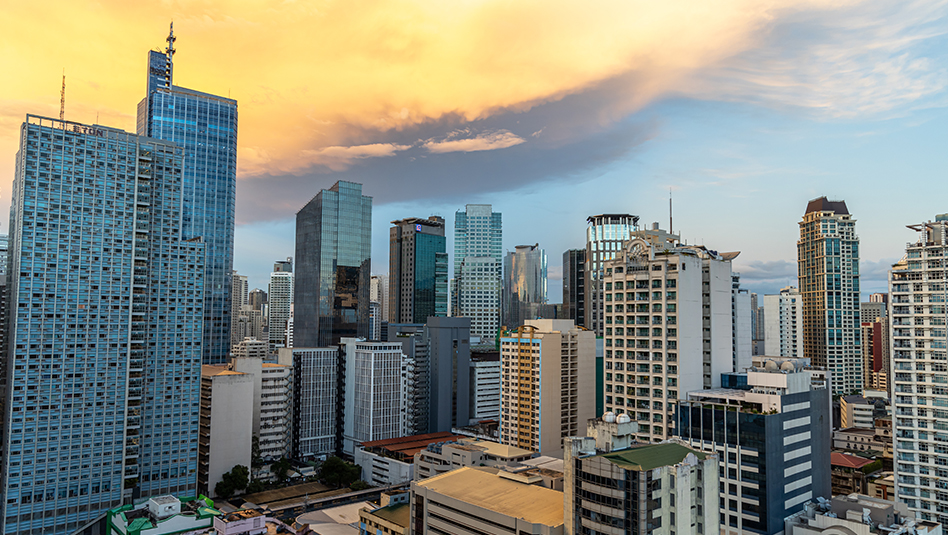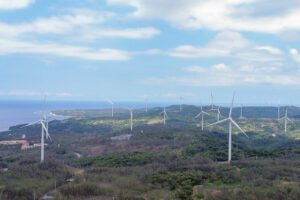




Policy rate views: Fed expected to do baby steps
 DOWNLOAD
DOWNLOAD

Inflation Update: Faster but full-year average within target
 DOWNLOAD
DOWNLOAD

Monthly Economic Update: Waiting on Jay Powell
 DOWNLOAD
DOWNLOAD


Renewables seen to offset the rise in electricity prices

By Sheldeen Joy Talavera, Reporter
THE PRICE AND SUPPLY of electricity in the Philippines are seen to be challenged this year due to warm weather but may be offset by the power capacity expansion from renewables.
Jose M. Layug, Jr., president of Developers of Renewable Energy Advancement, Inc., said he is anticipating supply challenges, especially during the summer months.
“No matter how we tried to maintain all these coal-fired plants, the point is they are already old so you should expect these power plants to break down very often and that’s why we need new capacities,” he said in a virtual interview.
“Otherwise, we will have an issue on supply, and we will be placing yellow alerts,” he added, referring to the warning when reserves fall below a designated safety margin.
In 2023, the Philippines was placed under yellow and red alerts several times due to sudden plant outages. The Department of Energy (DoE) had expected 12 yellow alerts last year. Red alerts are raised when the supply-demand balance deteriorates further, signaling the possibility of rotational brownouts.
For 2024, the DoE has so far not projected any potential yellow and red alerts as it banks on new solar power plants that will be coming in, which it said will be “favorable” under an El Niño scenario.
Latest data from the state weather bureau Philippine Atmospheric, Geophysical and Astronomical Services Administration showed that a moderate El Niño would continue to persist and intensify in the coming months.
Energy Secretary Raphael P.M. Lotilla is expecting a favorable status in electricity supply this year as he anticipates the completion of power transmission projects.
“We did manage to contain the weakness in 2023, and 2024 promises to be better. But of course, from the supply side, and we hope that by 2024, we shall also finish a number of major transmission connections, but of course, there remain threats,” he told reporters in an interview last month.
Privately owned National Grid Corp. of the Philippines (NGCP) holds the sole and exclusive concession and franchise for the operation of the country’s power transmission network, which links power generators and distribution utilities to deliver electricity nationwide.
NGCP has already energized some of its transmission projects such as the P10.2-billion Hermosa-San Jose 500-kilovolt transmission line. It is currently working on the full completion of the Mindanao-Visayas Interconnection Project (MVIP).
Majah-Leah V. Ravago, an energy economist from the Ateneo de Manila University, said increasing power generation means investing in transmission projects.
“You cannot address the problem that you’re just looking at generation because the consumption of electricity is a whole system in itself,” she said in a virtual interview.
“You cannot look at increasing generation without accompanying investment in transmission and distribution. We have many cases like that,” she added.
Two decades after the Electric Power Industry Reform Act was passed, electricity rates in the Philippines are still one of the highest in the region as there are still a lot of inefficiencies in the system.
The Philippines’ per capita consumption of electricity is low relative to its neighbors due to high power prices brought on by inefficiency and reliability issues, according to Ms. Ravago.
Citing data from the World Bank and the United Nations, she said that the country’s per capita consumption was at 975.61 per kilowatt-hour (kWh) in 2022.
This is relatively lower compared with the country’s peers in the Association of Southeast Asian Nations (ASEAN) such as Singapore (9,168.82 per kWh), Malaysia (5,318.78 per kWh), Indonesia (2,662.31 per kWh), and Thailand (1,210.67 per kWh).
Electricity consumption in the country is expected to grow by nearly four times the 2018 level by 2040, Ms. Ravago said.
“If we are to meet that growth by 2040, it means that electricity consumption has to grow. It means demand is growing, it has to be met by supply. Otherwise, we would have electricity price increases,” she said.
To meet the demand, she said that the government should address regulatory bottlenecks both for generation and transmission.
Since power generation is privately led in the Philippines — which attracts investments — the government should instead focus on facilitating these capital inflows, easing regulatory burdens, and expanding transmission, Ms. Ravago said.
“We just need to make sure that the other related infrastructure, transmission lines, and ports are also upgraded in time of these projects going online,” Mr. Layug said.
Data from the DoE showed that wind, natural gas, and solar dominated most of the indicative projects, or those currently in the pre-development stage, as of August 2023 with a capacity of 34,080.50 megawatts (MW), 7,987.60 MW, and 7,811.86 MW, respectively.
‘THE WAY TO GO’
Renewables are seen to be able to offset a rise in electricity prices and mitigate the high prices of oil and coal.
“This year… the private sector is happy about how the government, particularly the DoE, has convinced and has signaled to the private sector that renewables are the way to go,” Mr. Layug said.
As of end-2022, the share of renewable energy (RE) in the country’s power generation mix was about 22%. The government has set a target of increasing this to 35% by 2030, then 50% by 2040.
“We all know that the cost of RE is now more optimal, more affordable especially for the consumers, so we’re happy with that and we hope the government continues its forward-looking planning of the energy sector in the Philippines by continuously pushing for renewable as part of the energy mix,” Mr. Layug said.
Within RE technologies, solar and wind energy are seen to drive the growth of renewables.
“In the next three years, I still see solar onshore and onshore wind to dominate. With, hopefully, waste-to-energy [projects] catching up a little bit,” Mr. Layug said. “We hope to see floating solar and offshore wind to dominate.”
As of October, the DoE has awarded around 1,300 RE contracts, promising a total potential capacity of about 130,000 MW.
Of the total, 225 wind energy contracts have been awarded with the highest combined capacity of 83,079.3 MW. This was followed by 356 solar energy projects with 27,889 MW and 430 hydropower projects with a capacity of 18,924.4 MW.
“We are in a good position to implement reforms necessary to energy transition,” Ms. Ravago said, citing the moratorium on new greenfield coal power plants and the liberalization of the RE sector.
This article originally appeared on bworldonline.com





 By BusinessWorld
By BusinessWorld